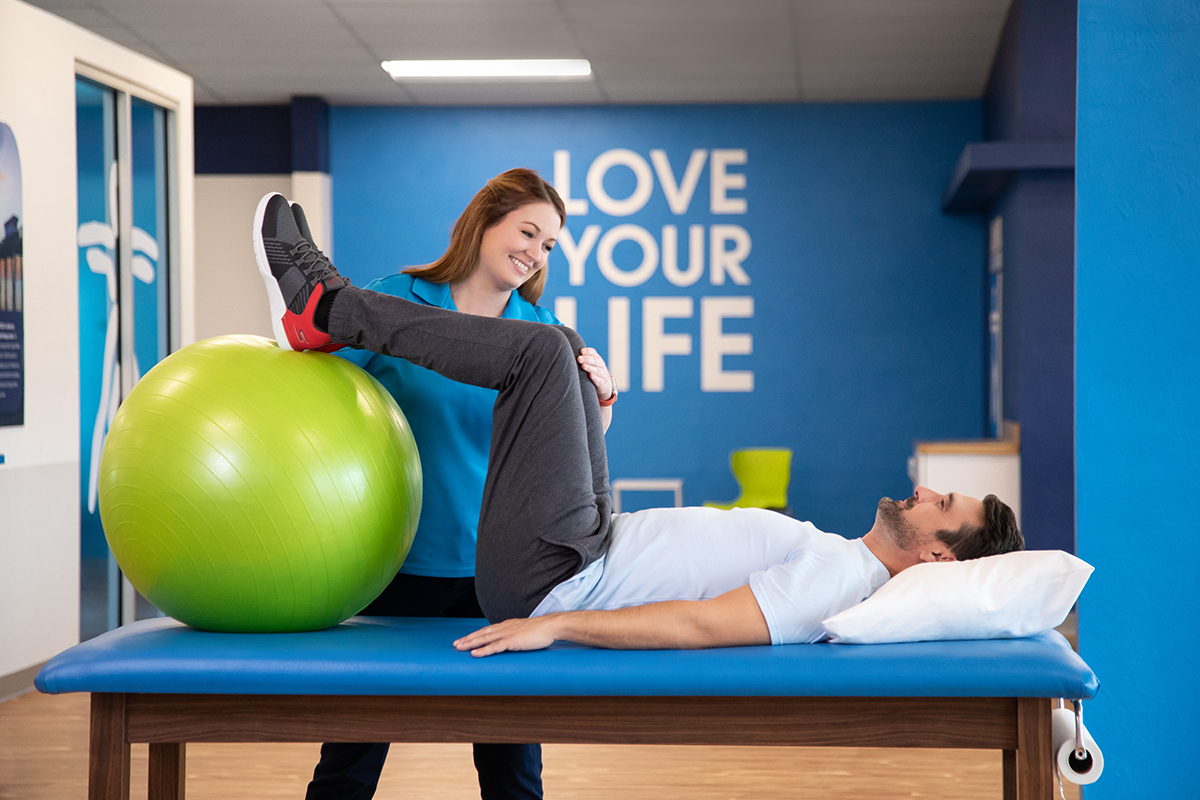Pelvic Health
Pelvic Health
We recognize that your pelvic health is a sensitive topic. When it comes to pelvic health physical therapy treatment, whether it be for women’s health or men’s health related issues, you want to feel confident in your provider’s knowledge and understanding of the issues you are facing.
Pelvic floor therapy, also known as pelvic floor physical therapy or pelvic rehabilitation, is a highly specialized form of physical therapy that should only be provided by therapists who have completed advance post-graduate educations and training. At FYZICAL Therapy & Balance Centers of Oakton Dr. Kristin Dunn leads our pelvic floor practice and brings practical knowledge and hands-on experience of the newest research available to her treatment sessions to help patients receive the highest quality and evidence-based care.
Pelvic floor therapy, also known as pelvic floor physical therapy or pelvic rehabilitation, is a highly specialized form of physical therapy that should only be provided by therapists who have completed advance post-graduate educations and training. At FYZICAL Therapy & Balance Centers of Oakton Dr. Kristin Dunn leads our pelvic floor practice and brings practical knowledge and hands-on experience of the newest research available to her treatment sessions to help patients receive the highest quality and evidence-based care.
What Are Pelvic Floor Disorders?
Pelvic floor disorders cause uncomfortable symptoms, such as urine leakage and constipation and or pain, and can lead to embarrassing disabling limitations in daily life. Some people are so embarrassed by these issues that they don't seek help. Many don't know that pelvic physical therapy treatments for pelvic floor disorders involve no medication or surgery, and are highly effective and supported by very strong research.
Enjoying a pain free life with good bladder and bowel control, physical activity, laughter, and sexual health requires healthy pelvic floor muscles. At FYZICAL Therapy & Balance Centers of Oakton, we believe that heaving a healthy pelvic floor will help you Love Your Life!
Types of Pelvic Floor Disorders
Affects 35% of all women, 50% of women over the age of 65, and 25% of all men.
- Urinary incontinence (unintentional leaking of urine)
- Urinary urgency (strong urge to urinate)
- Urinary frequency (urinating more than 8 times in 24 hours)
- Nocturia (waking up more than once during the night to urinate)
- Slow or weak urine stream
- Difficulty emptying the bladder
- Pelvic organ prolapse (cystocele or uterine prolapse)List Item
Bowel Control Problems
- Constipation
- Fecal incontinence (unintentional leaking of stool)
- Fecal urgency (strong urge to have a bowel movement)
- Pelvic organ prolapse (rectocele)
Pelvic Pain Problems
- Pelvic pain
- Bladder pain (painful urination, pain after urination, interstitial cystitis)
- Pain with bowel movements
- Abdominal pain
- Painful abdominal scars (abdominal nerve entrapments, trigger points)
- Dyspareunia (pain before, during, or after intercourse)
- Coccydynia (tailbone pain)
- Vulvar pain (vulvodynia, vestibulodynia)
- Prostatitis
- Post-prostatectomy issues
Pregnancy-Related Problems
Affects 50-70% of women during pregnancy, and 30-50% postpartum
- Pelvic girdle and back pain
- Diastasis rectus abdominis (pregnancy-related separation of the abdominal wall)
- Sacroiliac joint pain
- Coccyx pain (tailbone pain)
- Pubic symphysis dysfunction
- Cesarean section complications
- Perineal injuries (episiotomy, perineal tears)
- Painful intercourse after vaginal delivery
- Postpartum perineal pain
- Pelvic floor muscle weakness (incontinence issues during and after delivery)
What is Pelvic Floor Therapy?
Pelvic floor therapies focuses on the muscles, ligaments, and connective tissues of the pelvic floor. The pelvic floor is a group of muscles that form a supportive sling or hammock at the bottom of the pelvis, helping to support the pelvic organs, control bowel and bladder functions, and contribute to sexual function.
Pelvic floor therapy is often considered a conservative and non-invasive approach to managing pelvic floor disorders. It can be particularly beneficial for individuals who want to avoid surgery or reduce reliance on medications. A healthcare provider, such as a urologist, gynecologist, or physical therapist, may refer individuals to pelvic floor therapy based on their specific symptoms and diagnosis.
Pelvic floor therapy is often considered a conservative and non-invasive approach to managing pelvic floor disorders. It can be particularly beneficial for individuals who want to avoid surgery or reduce reliance on medications. A healthcare provider, such as a urologist, gynecologist, or physical therapist, may refer individuals to pelvic floor therapy based on their specific symptoms and diagnosis.

Treatment May Include
- Evaluation/Assessment
- Patient education on condition and modifications to lifestyle
- Urge suppression techniques and autonomic quieting
- Biofeedback for relaxation of pelvic floor muscles or recruitment of pelvic floor
- Addressing musculoskeletal dysfunction & movement imbalances
- Instruction in posture, body mechanics and appropriate breathing
- Instruction in pelvic floor exercises in coordination with diaphragmatic breathing and core recruitment
- Manual therapy - soft tissue mobilization to pelvic floor muscles
- Use of vaginal dilators
- Bladder training
- Toileting postures and mechanics